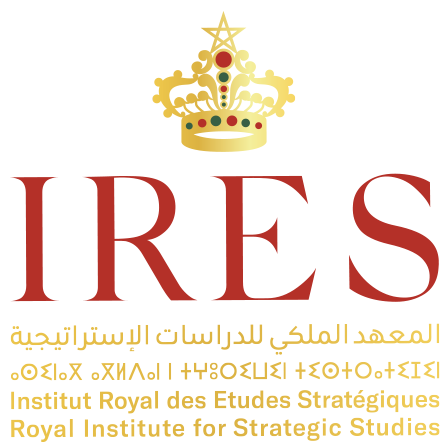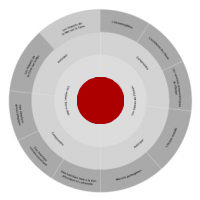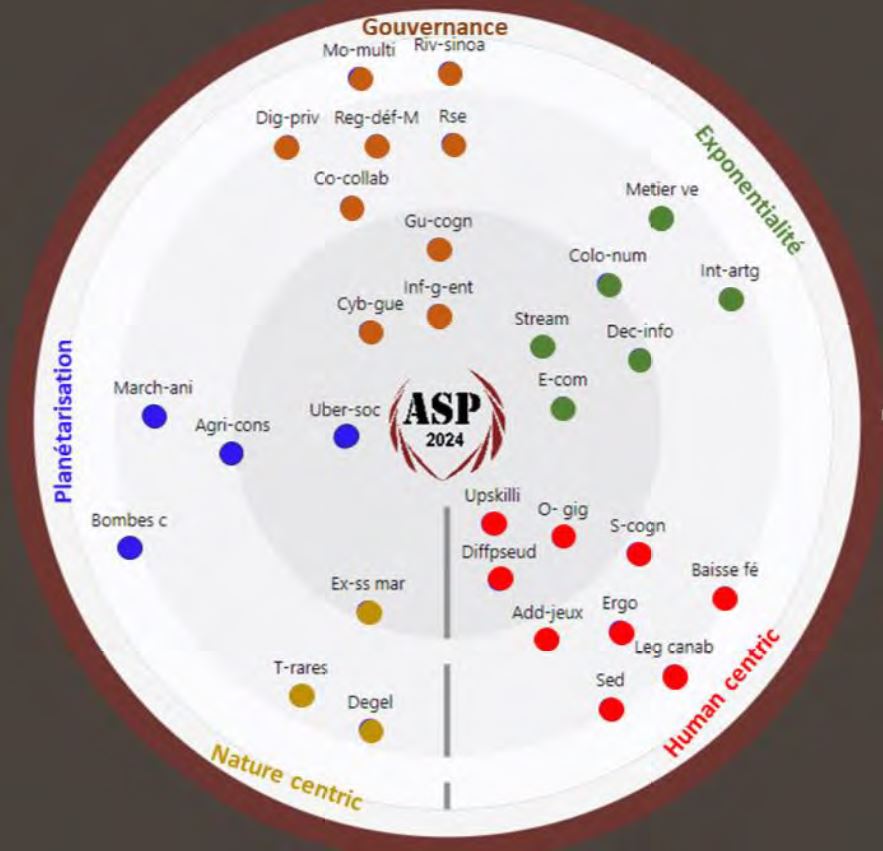ANNUAL SURVEY PAPER 2024
INTRODUCTION
The aim of this Royal Institute for Strategic Studies (IRES) annual digital publication, is to inform public and private decision-makers of major emerging trends to consider when drawing up short-, medium- and long-term strategies and action plans.
This publication is available in two forms:
- A printable document you can download above.
- A list of short articles, each addressing a specific topic and categorized according to the IRES reading grid. These articles can be accessed by category using the horizontal menu above.
CURRENT EVOLUTIONS
For nearly a century, humanity has been undergoing a period of Great Transition: the “shapers” that have molded the world for millennia are fading away, giving way to new ones. As evolution accelerates, bringing with it major structural crises, new emergences hint at the contours of the world to come. In a radically shifting landscape that is ever more vulnerable, uncertain, critical and artificial (VUCA2), three distinct types of change emerge. The signals of such change have been clearly perceptible since the turn of the century. These are outlined here.
The evolution of humanity and its societies
- Individuals: Individualism, Alien Gen (digital natives and mutants).
- Human societies: breakdown of cohesion, freedom/security balance, Liquid Society.
- Power management: Democracy, Governance, Collective Intelligence, Soft Power.
Thus, Digitalization has all fundamentally transformed the way in which people live, work and interact – from education and commerce to the media, healthcare and government relations. Digital platforms (Uber, Airbnb, Amazon, etc.) have transformed business landscapes, creating new business models built on sharing and convenience (sharing economy, outcome economy). Over the past two decades, China has emerged as a major economic power, exerting significant influence on the global economy and international politics.
The evolution of technology, tools for human action
- Increasingly electrified and digitalized technical instruments.
- Biotechnologies altering the human genome.
- Generalized integration of Artificial Intelligence.
- Next tech: future development of nuclear fusion, generalized application of additive manufacturing, virtualization of human activity (metaverse, augmented reality, cyber protection, etc.).
Consequently, Artificial intelligence and robotic automation are spreading across a whole range of sectors, from autonomous vehicles to personal virtual assistants and advanced manufacturing, shaping the future of work. Similarly, advances in human genome sequencing, gene therapy and biotechnology, supported by Artificial Intelligence expansion into healthcare, contribute to delivering more personalized, accurate and effective healthcare.
Changing civilizations and interaction with Nature
- Anthropocene: Civilization founded on exploiting and controlling nature (essentially for economic purposes).
- Planetization: Appropriation and utilization of the planet as a whole.
- Accelerating progress towards planetary limits, notably with global warming and the degradation of biodiversity, raises the urgency of reassessing our relationship with nature.
Thus, faced with the climate crisis, an increasing number of governments and businesses have launched initiatives to cut carbon emissions and foster sustainable development and the energy transition: renewable energies, the circular economy, sustainable agricultural practices, etc. Globalization gives way to a new globalism in which virtually anywhere on the planet is accessible to anyone.
This overview of major emerging trends is updated annually with newly identified ones, and presented in this new IRES collection.
OBJECTIVE
Decision makers today face an overriding responsibility to adapt to ever-changing realities, unfolding at unprecedented rates. In the wake of the Covid-19 pandemic, there is increased global interest, across all sectors, in identifying, understanding and anticipating emerging trends. This seeks to effectively gear up for such transformations, so as to better tackle the challenges of present and future.
To mitigate short- and medium-term risks, decision-makers and frontline operators alike have a duty to heighten and broaden vigilance to include key emerging trends sweeping the globe, which can no longer be overlooked.
This annual overview, the product of the Institute’s foresight intelligence exercise, is intended to enhance and complement the major emerging trends of the last twenty years. While not exhaustive, it focuses on selected key trends within each of the five pillars of the IRES reading grid, and highlights how they impact Morocco, its natural environment, population, business sectors and future.
READING GRID
IRES uses a reading grid for analyzing current and future developments, based on five pillars. Emerging trends identified in the Annual Survey Paper are broken down along these five pillars:
- Human-centric: all the evolutions and aspirations that contribute to reshaping Humanity, in its uniqueness as well as in its sociability, in its relationship to the machine, to work, to its living environment, etc.
- Nature-centric: the search for a different relationship with the living world, an economy that is more respectful of the environment and a lifestyle that is less oriented towards consumption; and the awareness that we must now take care of nature and all living things.
- Exponentiality: all structural phenomena that accelerate exponentially, such as communication technologies, digitization, demography, economic competition, financialization, social inequalities, etc.
- Planetization: a new, disruptive stage of progress, during which coexist a state of globalization (post-globalization) and a new awareness of the “living” quality of the planet, as a biosphere of which humans are only one of the components.
- Governance: all the processes involved in managing collective action, from the orientation of actors’ behavior (bottom-up) to the mobilization and motivation of “agents” (concerted actions, soft power).
A synthetic overview (radar) presents all these items, providing a comprehensive visual representation.
Emerging issues are listed in alphabetical order within each pillar. The aim is to identify as wide a range of areas as possible.
The presentation of each emergence * is articulated as follows:
- Pillar of interest
- Title
- Definition
- Outline of emergence and current situation
- General issue
- Interest/consequences for Morocco
Finally, while the PDF version includes a glossary at the end of the document, hovering over underlined terms in the digital version posts will display their definitions.


